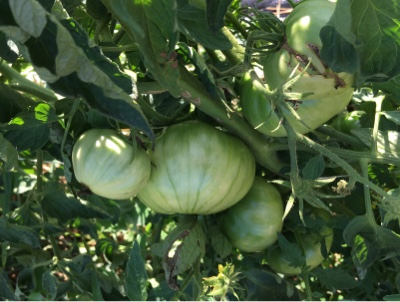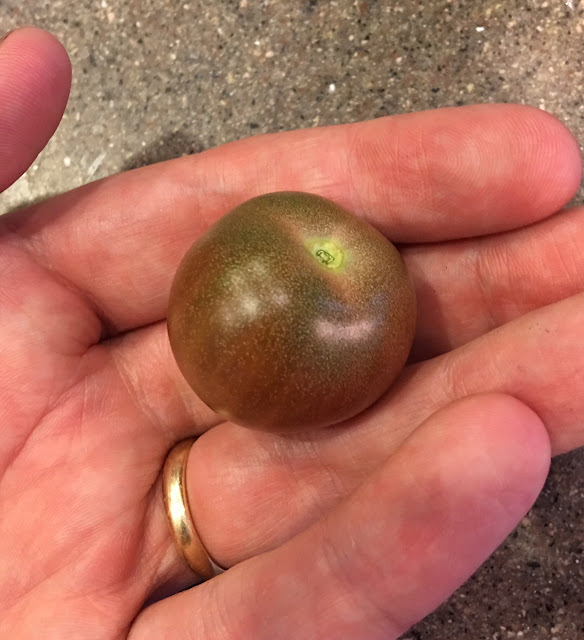Welp, the big season is done. After the big harvest in July, we were on vacation, then by the time I got back to the garden in early August I only could pick about half a pail of tomatoes. By then, most of the plants had started dying - looks like late blight? Basically, drying up with stems turning brown from the bottom up. It looks like it's not just my plants, but the same thing is happening to most of the plants in the community garden. This may be because we just had a pretty constant, wet early summer and it supported the fungal load. Also, there is definitely more fruit damage - spots, rotting, end rot, etc.
Although there's less fruit falling on the ground then years past, there's still a fair amount. So I could still do more to prune suckers early on in the season I think; but it will definitely mean increasing labor a lot.
From the July harvesting I had about 11 quarts of mainly pureed F2 fruit and a similar amount of heirloom fruit (CP, ML, Romas mostly.) So I made 2 batches of marinara sauce. Unfortunately I burned the F2 sauce while cooking it down. :( Still canned 5 quarts but it's probably lousy. Then I made sauce from the heirlooms and it went better, 5 & 1/2 quarts that came out pretty good. So it goes. Already thinking about next year...!
Oh yeah, I bought a Victoria food press to process the tomatoes... A great purchase! I learned a few things while using it too. First, it's designed to process chunks of tomatoes - not already-pureed tomatoes. It does a great job of removing skins and seeds in short order from fresh chunks i.e. quartered tomatoes. But if you put puree into it, it tends to gum up the screen pretty quickly. Probably because I food-processed the puree too much so the skin bits, etc were very tiny and clogged the screen instead of moving out through the screw mechanisms. That meant it took a really long time cranking on the handle to get the juice out. But it was still nice, because the resulting strained juice was really free of skin and seeds. Totally worth it.

















































